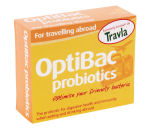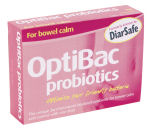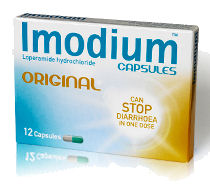|
Worldwide,
unsafe drinking water is a major
problem. However,
international travelers should not become hysterical about
avoiding all water whilst traveling abroad. Most of the general
information sites for travelers tend to recommend avoiding
drinking water anywhere abroad. But to avoid water where it
is safe, can be annoying and inconvenient where is safe to
drink.
Safe Water for International Travelers (SWIT)
- is an independent organization that provides the best available
information about water safety around the world. Information
is gathered from the most important and trustworthy sources.
Is
it safe to drink water abroad?
 Safe
beverages include bottled carbonated beverages (especially
beverages like Coke and Fanta), beer, wine, hot coffee or
tea, or water boiled and appropriately treated with iodine. Safe
beverages include bottled carbonated beverages (especially
beverages like Coke and Fanta), beer, wine, hot coffee or
tea, or water boiled and appropriately treated with iodine.
TD typically results in four to five (sometimes more)
loose or watery stools per day. The average duration of diarrhoea
is 3 or 4 days but about 10% of the cases persist longer than
a week and approximately 15% of cases experience vomiting,
and up to 10% have diarrhoea accompanied by fever or bloody
stools, or both.
 Most
food related illness is due either to a change in the
amount or type of food, or an infection caused by eating contaminated
food. Most
food related illness is due either to a change in the
amount or type of food, or an infection caused by eating contaminated
food.
Infectious agents (Bacteria, Viruses & Protozoans)
are the primary cause and people travelling from developed
to developing countries frequently experience a rapid and
dramatic change in the type of organisms in their gastrointestinal
tract.
These new organisms often include potential enteric
pathogens and those who develop diarrhoea have usually ingested
sufficient virulent organisms to overcome their individual
defence mechanisms, resulting in symptoms.
The organisms most commonly associated with traveller's
diarrhoea are; E.Coli, Salmonella, Campylobacter, Shigella,
Rotavirus and Giardia.
 Prevention
of Traveller's Diarrhoea Prevention
of Traveller's Diarrhoea
No vaccines are available and none are expected to be
available in the near future that are effective against TD.
The use of prophylactic antibiotics is not recommended
for travellers since there is little evidence to show that
they are widely effective in preventing TD and there are potential
drawbacks which include include allergic and other side effects
and the possibility of developing resistance.
A new product has been developed and is currently being
launched in Australia that has been clinically proven to reduce
the risk of E.coli caused TD (current TGA regulations prohibit
the use of the words Prevents or Protects). The product is
called Travelan. More information on Travelan can be found
HERE.
However, most evidence shows that meticulous attention
to hygiene during food and beverage consumption can greatly
decrease the likelihood of developing TD. Many travellers,
however, encounter difficulty in observing these restrictions.
|


|
Some
useful precautions include:-
-
Unless
you are sure of the purity of the water supply,
don't drink it. This also applies to water used
for ice-cubes and for cleaning teeth.
-
Water
from sealed lid bottles is usually safe, as are
hot tea and coffee, fizzy drinks, beer and wine.
-
Take
care with local cheeses and ice cream. Boil unpasteurised
milk before use.
-
Cook
meat thoroughly and eat while still hot. Avoid leftovers.
-
Fish
and shellfish may be hazardous even if well cooked.
Take local advice, but avoid seafood if in doubt.
-
Eat
only cooked vegetables and avoid salads.
-
Peel
all fruit, including tomatoes. Avoid food exposed
to flies.
-
Wash
all dishes and cutlery in clean, hot water.
-
Wash
your hands thoroughly before eating or handling
food, and always after using the toilet.
|
Furthermore,
our intestinal flora are thought to play an important
role in protecting us against infection and managing immunity.
They also provide specific enzymes needed to digest particular
substances in the diet. Many digestive health problems including
TD can escalate as our fragile intestinal flora is disturbed
by the environmental and dietary changes associated with foreign
travel.
 Travellers
can minimise these digestive health risks by departing with
a well balanced and healthy intestinal flora and by maintaining
this protective shield throughout their travels. Travellers
can minimise these digestive health risks by departing with
a well balanced and healthy intestinal flora and by maintaining
this protective shield throughout their travels.
OptiBac Probiotics For travelling abroad (formerly known as
Travla) is an advanced probiotic formulation from OptiBac
Probiotics specifically developed for travellers as an effective
means to ensure a healthy and well balanced intestinal flora
by strengthening the healthy balance of friendly bacteria
in the gut and enhancing its protective capacity and by selectively
binding to harmful bacteria and flushing them out.
The usual dosge is; One capsule a day, preferably with breakfast,
starting one week before departure and continuing during your
travel abroad.
A range of OptiBac probiotics can be obtained over the counter
from many pharmacies in the UK or by visiting their OptiBac
probiotic
supplements web site.
 For
those travellers unfortunate enough to suffer from an upset
tummy abroad there is now a natural alternative to anti-motility
drugs such as loperamide & Imodium. While these drugs
block the intestines to stop the diarrhoea, there is a natural
probiotic yeast called Saccharomyces boulardii which will
help flush out pathogens such as e coli and salmonella off
the intestinal wall lining, and stop diarrhoea naturally. For
those travellers unfortunate enough to suffer from an upset
tummy abroad there is now a natural alternative to anti-motility
drugs such as loperamide & Imodium. While these drugs
block the intestines to stop the diarrhoea, there is a natural
probiotic yeast called Saccharomyces boulardii which will
help flush out pathogens such as e coli and salmonella off
the intestinal wall lining, and stop diarrhoea naturally.
The first product in the UK to include Saccharomyces boulardii
is called OptiBac Probiotics For bowel calm (formerly known
as DiarSafe) from OptiBac Probiotics, and is priced lower
than Imodium. Dosage is one to two capsules per day depending
on severity of symptoms.
Ask your local health food store or pharmacy for OptiBac Probiotics
or to find out more about OptiBac Probiotics -
the UK's best selling range of probiotic
supplements.
 Treatment
of Travellers Diarrhoea Treatment
of Travellers Diarrhoea
Travellers
with TD have two major complaints for which they desire
relief; abdominal cramps and diarrhoea.
Oral
Rehydration Solution (ORS)
Most
cases of diarrhoea are self-limiting and require only
simple replacement of fluids and salts lost in diarrhoeal
stools. This is best achieved by the use of oral rehydration
solution such as Dioralyte, Electolade, Rehidrat, or similar,
which is available in sachets of powder at stores or pharmacies
in almost all countries and must be prepared by adding the
contents of a sachet to boiled or treated water.
The instructions should be checked carefully to ensure
that the powder is added to the correct volume of water. This
solution is appropriate for treating as well as preventing
dehydration and should be consumed or discarded within 12
hours if held at room temperature or 24 hours if kept refrigerated.
If
sachets of ORS are unavailable or you have run out, an
emergency alternative can be made up using
eight teaspoons of sugar and one teaspoon of salt added
to one litre of safe, drinkable water. |
Travellers
should be advised to avoid iced drinks and non-carbonated
bottled fluids made from water of uncertain quality. Milk
can aggravate diarrhoea in some people and travellers with
diarrhoea should avoid it.
 Antimotility
Agents Antimotility
Agents
Such
as Imodium (loperamide) and codeine come in convenient dosage
forms and provide prompt symptomatic but temporary relief
of uncomplicated TD by inhibiting intestinal movements.
They
slow down the motility of the gut and increase fluid absorption
by normalising the transit through the gut and restoring normal
stools. They also diminish diarrhoea and shorten its duration
thereby reducing fluid loss at the same time.
 Antimotility
agents relieve discomfort and social disruption and are safe
and effective for otherwise healthy adults. They are best
used when sanitary arrangements are difficult such as a long
journey. Antimotility
agents relieve discomfort and social disruption and are safe
and effective for otherwise healthy adults. They are best
used when sanitary arrangements are difficult such as a long
journey.
Self medication with antimotility agents is appropriate following
sudden onset of increased bowel action with loose watery stools
in persons over 12 and under 75 years of age who were previously
in good health and not suffering from any other serious illness.
However, they should not be used by people with high fever,
with blood in the stools, or if there is vomiting and dehydration.
They should be discontinued if symptoms persist beyond 48
hours or they could make the illness worse.
Medical
assistance
(if available) should always be sought if any of the following
occur:-
- There
is blood in the faeces
- There
is a fever
- The
sufferer becomes confused
- The
diarrhoea does not settle within 72 hours
However,
medical assistance is not always available and the sufferer
must decide whether or not to be treated using available antibiotics.
 Antibiotic
Treatment Antibiotic
Treatment
travellers
who develop severe and prolonged diarrhoea especially
if associated with nausea, vomiting, abdominal cramps, fever,
or blood in the stools, would benefit greatly from antibiotic
treatment. Nausea and vomiting without diarrhoea should not
be treated with antibiotics.
The
most likely antibiotic regimen to be effective against
enteric bacterial infection is ciprofloxacin (500mg taken
twice a day), whilst metronidazole (800mg taken three times
a day) is usually effective against protozoan infection. There
is no antibiotic treatment effective against viral infection.
 The
biggest problem facing the sufferer is being able to accurately
diagnose the cause which is virtually impossible without medical
training. Since the symptoms of bacterial infections develop
much more rapidly than protozoan infections it is safe to
assume that a sudden onset is a bacterial infection. The
biggest problem facing the sufferer is being able to accurately
diagnose the cause which is virtually impossible without medical
training. Since the symptoms of bacterial infections develop
much more rapidly than protozoan infections it is safe to
assume that a sudden onset is a bacterial infection.
In
this situation treatment should consist of ciprofloxacin
500mg twice a day but if no improvement is seen within three
or four days the sufferer should be switched to metronidazole
800mg three times a day.
It
must be stressed that this treatment is to be undertaken
in emergencies only when there is no chance of getting
immediate medical assistance.
|
Some
useful resources:
|
 |
|
Please
Note: The table below lists many of the bugs that cause
travellers diarrhoea together with some of the common
symptoms but it should only be regarded as a source
of quick reference and not as a definitive guide to
the diagnosis and treatment of travellers diarrhoea.
Accurate diagnosis even by a qualified physician often
requires lab culture conformation.
|
|
Table
of bugs (micro-organisms) that cause travellers diarrhoea
and some examples of commonly associated foods
|
| Micro-organism
(cause) |
MEDIUM
|
Foods
|
Common
Symptoms
|
| FOOD |
WATER |
None
|
yes
|
no
|
heavily spiced foods, strange, new diet |
Nausea
and mild diarrhoea usually lasting for 24 - 48 hours usually
resolves without specific treatment. |
| BACTERIA |
Bacillus Cereus
|
yes
|
no
|
cooked rice, cooked meats, vegetables |
1
- 5 hours predominantly vomiting or 8 - 16 hours predominantly
diarrhoea.
|
Campylobacter
|
yes
|
yes
|
raw
milk, poultry |
Abdominal
pain, diarrhoea occasionally with blood, malaise, vomiting
is uncommon. Incubation up to 11 days usually 2 - 5 days |
Cholera
|
yes
|
yes
|
Shellfish,
contaminated water |
Spread
by contaminated food or water, onset is sudden but difficult
to differentiate from other types. Vomiting is frequent.
It improves as fluid replacement progresses. Oral antibiotics
reduce the length of infection. |
Clostridia
|
yes
|
no
|
fish,
meats, vegetables, honey |
Diarrhoea
with abdominal pain, vomiting is rare. Incubation is usually
12 - 18 hours. Infection with Cl. Botulinum can be fatal. |
Escherichia Coli
(E. Coli)
|
yes
|
yes
|
salad, raw vegetables, milk, cheese, undercooked meat |
The
bacteria multiply in the small intestine and produce toxins
which give rise to the symptoms which include passage
of profuse water stools. The condition is self limiting
and usually lasts for 48 hours. |
Listeria
|
yes
|
yes
|
cheese, raw milk, coleslaw |
Diarrhoea
and abdominal pains are often accompanied by conjunctivitis
and a sore throat. Rarely, in severe cases septicaemia
may develop. Particularly dangerous in pregnant women
as it can cause still birth. |
Salmonella
(non typhoid)
|
yes
|
yes
|
dairy products, salad, vegetables, eggs, meat, shellfish |
Diarrhoea
containing mucus, abdominal pain, vomiting and fever lasts
about a week. Incubation usually 12 - 36 hours. |
Shigella
|
yes
|
yes
|
potatoes, eggs |
A
form of dysentery and responsible for up to 15% of travellers
diarrhoea. An initial feverish phase with profuse watery
stools leading to a prolonged illness with loose and frequent
stools containing blood and mucus. |
Staphylococcus
Aureus
|
yes
|
no
|
ham,
poultry, eggs, salad, cheese, cream, ice-cream |
Nausea,
vomiting, abdominal pain, prostration, dehydration, low
temperature, sometimes diarrhoea. Incubation usually 2
-4 hours. |
Typhoid
|
yes
|
yes
|
polluted water, shellfish, contaminated milk and milk products,
raw vegetables |
Symptoms
show after 7 days and include headache, fever, abdominal
pain, constipation and diarrhoea. Usually fatal if left
untreated. |
Vibrio
Parahaemolyticus
|
yes
|
yes
|
raw
or undercooked shellfish, particularly oysters |
Abdominal
pain, diarrhoea, occasionally nausea, vomiting, fever
and headache. Incubation usually 12 - 24 hours. |
| VIRUSES |
Hepatitis A
|
yes
|
yes
|
drinking water, shellfish, raw fruit and vegetables |
The
virus is spread mainly by contaminated drinking water.
The main symptoms are a flu like illness followed by loss
of appetite, nausea and vomiting, and abdominal pain followed
by jaundice. Diarrhoea may or may not be present. Development
of chronic hepatitis is rare with the A strain of the
virus. |
Rotavirus
|
yes
|
yes
|
no
information |
Diarrhoea
can be severe due to invasion of gut wall by the virus
destroying the ability to absorb fluids and reducing the
levels of digestive enzymes. |
| Norovirus
(Norwhalk) |
yes
|
yes
|
no
information |
The
norovirus is a poorly understood virus and is very difficult
to combat. Infection is highly contagious and produces
no lasting immunity. It causes acute diarrhoea and vomitting
which is spread by droplets and direct contact. Most episodes
last for 24 or 48 hours and are rarely serious but can
be very unpleasant. This virus can be a particular problem
on cruise ships where it can spread very quickly amonst
the passengers and crew. |
| PROTOZOANS |
Cryptosporidium spp.
|
yes
|
yes
|
raw
milk, raw sausages |
A
distant relative of the malaria parasite the organism
invades the gut wall and causes an outflow of fluid that
lasts up to 10 days and longer. The only treatment is
rehydration therapy and the organism is also resistant
to chemical disinfection including iodine. |
Entamoeba histolytica
|
yes
|
yes
|
fruit, vegetables |
Onset
of diarrhoea is gradual and there is no fever which distinguishes
it from bacilliary dysentery. Diarrhoea contains blood
and mucus. |
Giardia lamblia
|
yes
|
yes
|
fruit, vegetables |
Profuse
watery diarrhoea is succeeded by a chronic phase with
bulky, foul smelling stools which may persist for months. |
| |
|